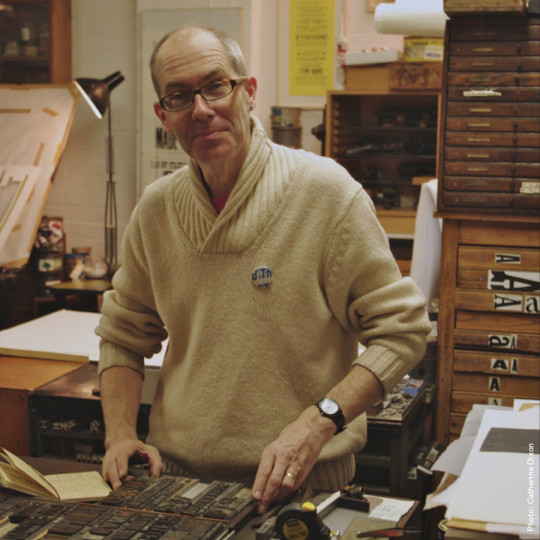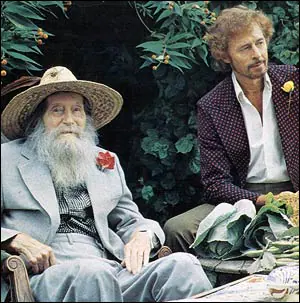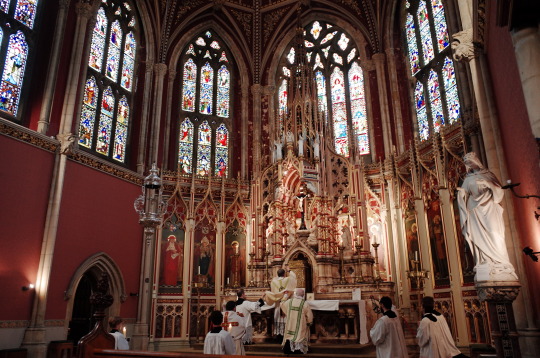#ushaw college
Explore tagged Tumblr posts
Text

"Saint Paulinus of York, Pray for Us!” #SaintoftheDay
📷 Saint Paulinus Stained Glass in Saint Cuthbert's Chapel, Ushaw College, UK / #LawrenceOP via #Flickr (CC BY-NC-ND 2.0). #Catholic_Priest #CatholicPriestMedia #OraProNobis
10 notes
·
View notes
Text

Phil Baines, who has died aged 65 of multiple system atrophy, was one of the most distinctive voices in contemporary British graphic design. His work included books, posters, art catalogues and lettering for three important London monuments – the memorial to the Indian Ocean tsunami in the grounds of the Natural History Museum and the 7 July memorials in Hyde Park and Tavistock Square, commemorating the victims of the 2005 London bombings. These projects point to Baines’s defining attributes: a scholarly appreciation of letterforms, a deep-rooted respect for materials and a love of collaboration.
Such attributes can also be seen in Baines’s cover designs for the Penguin Great Ideas series (2004-20), works by “great thinkers, pioneers, radicals and visionaries” that gave him a canvas on which to display his typographic philosophy. The Saint Augustine – Confessions of a Sinner cover, for instance, uses ancient ecclesiastical letterforms and yet looks superbly modern. For Chuang Tzu — The Tao of Nature, Baines arranged letters to suggest a butterfly in flight. David Pearson, one of two art directors for the series, described how his “often-oblique approach gave the series a crucial added dimension”.
Born in Kendal, Cumbria, Phil was one of the three children of Martin Baines, a construction contract manager, and Joan (nee Quarmby), a horticulturalist. Growing up in a Roman Catholic household, he began studies for the priesthood at Ushaw College, County Durham. During the holidays from Ushaw he worked at the Guild of Lakeland Craftsmen, Windermere, and from there his interest and confidence in art grew.
At the start of his fourth year, he quit Ushaw, and in 1980 began a year’s study on the foundation course at Cumbria College of Art and Design. In 1982 he moved to London and enrolled on the graphic design course at St Martin’s School of Art (now Central Saint Martins), where he met Jackie Warner, whom he married in 1989, and where he was among a talented cohort, many of whom went on to study, as he did, at the Royal College of Art.
Richard Doust, then leader of the first-year course at St Martins, recalled the portfolio Baines submitted for admission: “I was so excited … I was sure he was going to be someone very special. He quickly established his individuality. He made typography and particularly letterpress his own territory.”
Baines was fiercely individual – he did not join schools of thought or align himself with fashionable camps. Instead, he built a creative practice based on his belief in the “humanist” qualities of the English typographic tradition.
His contemporaries were using the computer to bring a new complexity to graphic communication. Smart software allowed for the overlapping and interweaving of text in ways that echoed the ecclesiastical manuscripts that Baines admired so much. He was no Luddite, and used the computer himself, yet his work invariably retained an element of the handmade.
Paradoxically, his work was greatly admired by the new generation of digital designers. Neville Brody, for instance, included Baines’s work in his experimental typography publication FUSE, produced to demonstrate the malleability of the new digital typography. Baines’s work does not look out of place among the other contributors, many of them American typography radicals whose multi-layered layouts were driven by modish theories of deconstruction and poststructuralism.
In 1988 he returned to Central Saint Martins (CSM), as part of the faculty. In staff meetings his willingness to say the unsayable was a frequent cause for consternation among colleagues. To his students he preached a doctrine of “object-based learning”, a typically contrarian notion in the age of screen-based and virtual graphic design. He was appointed a professor in 2006 and retired in 2020 as emeritus professor.
Despite his commitment to teaching, Baines did not give up his work for clients. As well as designing books for leading publishers, he worked for the Crafts Council and the Ditchling Museum of Art + Craft, and designed the signage for CSM’s King’s Cross campus. He designed exhibition catalogues for Matt’s Gallery, south-west London, relishing the creative three-way collaboration that existed between the gallery’s director, Robin Klassnik, exhibiting artists and himself.
He wrote books that contributed to the understanding of visual communication: Type & Typography (with Andrew Haslam, 2002), Signs: Lettering in the Environment (with Catherine Dixon, 2003) and Penguin by Design: A Cover Story 1935-2005 (2005), the last of which helped establish Penguin cover art as one of the most important bodies of graphic art in British design history.
With Dixon, he co-curated the Central Lettering Record, an archive of typographic history housed at CSM, and in November 2023 his work was celebrated in an exhibition, Extol: Phil Baines Celebrating Letters, at the Lethaby gallery, CSM. He was appointed as the Royal Mint advisory committee’s lettering expert in 2016, and reappointed in 2021 to advise on the integration of lettering on new coins and medals, with consideration given to special issues and the accession of King Charles to the throne. For this work, in 2023 he was awarded the Coronation medal.
Baines was an enthusiastic runner and cyclist, and loved music, especially the Manchester post-punk band the Fall. He was a collector of signs, lettering, and railwayana, and built his own studios at his home in Willesden Green, north-west London. A few years before his retirement he moved to Great Paxton, Cambridgeshire, where he took up bellringing.
He is survived by Jackie and their two daughters, Beth and Felicity, and by his father.
🔔 Philip Andrew Baines, graphic designer, born 8 December 1958; died 19 December 2023
Daily inspiration. Discover more photos at Just for Books…?
9 notes
·
View notes
Text
"A companion one day alluded to the length of his home address. Lafcadio said his address was longer — 'P. L. Hearn, Esq., Ushaw College, near Durham, England, Europe, Eastern Hemisphere, The Earth, Universe, Space, God.' His companion allowed that his address was more modest."
king (once again)
12 notes
·
View notes
Text
Paul Roche
Donald Robert Paul Roche (26 de setembro de 1916 – 30 de outubro de 2007) foi um poeta, romancista e professor de inglês britânico, um tradutor aclamado pela crítica de clássicos gregos e latinos, notavelmente as obras de Ésquilo , Sófocles , Eurípides , Aristófanes , Safo e Plauto. Nascido em Mussoorie , Índia, Roche, pronunciado "rawsh", era um associado do grupo Bloomsbury , especialmente do pintor Duncan Grant , que conheceu no verão de 1946 e que viveu com Roche e sua família até a morte de Grant em 1978.
Ele usou sua tradução de Édipo Rei de Sófocles para escrever um roteiro para uma versão cinematográfica da obra lançada em 1967 com Christopher Plummer no papel-título. Roche desempenhou um pequeno papel no coro grego .
Vida pessoal
Roche foi educado no Ushaw College . Ele foi ordenado padre em 1943. Ele obteve seu Ph.B e seu Ph.L (Licenciatura em Filosofia) no Gregorianum , mas deixou o sacerdócio na década de 1950. Casado duas vezes, ele foi pai de quatro filhos com sua esposa, Clarissa Tanner, de quem se divorciou em 1983, e um filho de um relacionamento anterior com Mary Blundell.
Significativamente, ele também teve um longo relacionamento com Duncan Grant. Ele não se dava bem com a companheira de Grant (e mãe do filho de Grant) Vanessa Bell . Roche retornou de Nova York para a Inglaterra para ficar com Grant após a morte de Bell, eventualmente acompanhado por toda a sua família. Tanner passou a aceitar o papel de Grant na vida de Roche, embora as relações sexuais entre Roche e Grant tenham esfriado por respeito a Tanner.

Paul Roche

Paul Roche

Paul Roche (right) and Duncan Grant, with whom he had a 32-year relationship, in Turkey
104 notes
·
View notes
Photo

Would you like to be a stone in this wall? Which of them do you identify with?
0 notes
Text
Korona Günlerine İlk Not
Oldukça halsiz ve yorgunum biraz hasta oldum ama çalışırken zihnimi blog yazmak epey boşaltıyor. Çok ilginç zamanlardan geçiyoruz, öngörmek ya da aldığımız önlemlerle tatminkâr hissetmek nerdeyse imkânsız. Biz İngiltere’nin uyguladığı sistemden su ana kadar memnunuz kendimizi iyi hissediyoruz. Tamamen önlemsiz bir sistem değil aslında. Üniversiteler uzaktan eğitim yapıyor, yüz yüze görüşmeler, kalabalık organizasyonlar iptal ve her yerde el yıkama abartılmış durumda. Sokağa çıkmak yasak değil ve liseye kadar okullar açık. Virüs hızlı yayılıyor bu yüzden ülkeyi tamamen kapatmak yerine, virüsün zirve olduğu zamanda kapatalım böylece azar azar bütün hasta olanları iyileştirebilelim diyorlar. Ekonomik bir bakış, her anlamda. Eleştiren çok insan var. İnsanların korku faktörü ve bireysel tedbiri on planda ki İngiltere’de genel olarak her şey bu mantıkla yapılıyor. Boris Johson İngiltere’nin süregelen, birey rasyonel hareket eder geleneğini bu salgında da kullanıyor. Ise yarar mı göreceğiz. Toplumun genel yapısı ve alışkanlıkları göz onunda bulunduğunda kendi içinde uyumlu bir tercih hükûmetin yaptığı. Galiba bu yüzden sisteme adapte olmadıkları için en çok yabancılar panik. Bazı arkadaşlar ülkelerine döndüler. Biz de mart sonu seyahatimizi iptal ettik ama Kerim okula gidiyor, biz de home office moddayiz. Dışarı çıkıyoruz ama kontrollü ve oldukça temizliğe özen göstererek. Kişisel bakış acısı insanın tercihlerini elbette etkiler ama böyle durumlarda toplumsal akışa da dikkat etmek gerekiyor diye düşünüyorum o yüzden kısmi bir sosyal izolasyon yapıyoruz.
Cumartesi günü evimize oldukça yakın bir yere gittik, Ushaw College. 2011 yılında eğitime kapatılmış, eski bir Katolik medresesi. İnanılmaz büyük! Üç Chapel, okuma odası, sergi odası, kitap satış odası, hediyelik eşya satış ofisi, kafe.. Konaklama ve konferans için kullanmak imkânı da var. Çok eski bir kütüphanesi var ve arşiv çalışmalarına açık. İçindeki büyük tiyatro salonu da sürekli etkinliklere ev sahipliği yapıyor. Yıllık üyelik aldık çünkü çok yakın, Kerimle rahat vakit geçirmek için güzel ve kafesi de çok hoştu. Kütüphanesi nadiren açıkmış ama kitap satışı yapılan yerde çalışmak serbest. Gezerken sunu duşunduk, bizim eski medreselerimizden kaçı bu kadar ulaşılabilir, halka açık, tarihi değeri korunmuş ve çoğunlukla gönüllülüğe dayalı olarak ayakta tutuluyor?


0 notes
Photo

Solemn High Mass. Ushaw College, County Durham.
#Traditional Latin Mass#tridentine mass#Extraordinary Form#ushaw#durham#catholic#roman catholic#Missale Romanum 1962
149 notes
·
View notes
Text


Trainee priests skate in a line on the College Pond at Ushaw, Durham County circa. 1965
Keystone/Getty Images
#priest kink#hierophilia#priestkink#priests#aesthetic#photography#black and white#getty images#priest#seminarians#vintage#catholic imagery
48 notes
·
View notes
Link
St. Gregory the Great from the Liturgy of the Hours today:
Do you really believe that it was by chance that this chosen disciple was absent, then came and heard, heard and doubted, doubted and touched, touched and believed? It was not by chance but in God’s providence. In a marvelous way God’s mercy arranged that the disbelieving disciple, in touching the wounds of his master’s body, should heal our wounds of disbelief. The disbelief of Thomas has done more for our faith than the faith of the other disciples. As he touches Christ and is won over to belief, every doubt is cast aside and our faith is strengthened. So the disciple who doubted, then felt Christ’s wounds, becomes a witness to the reality of the resurrection.
3 notes
·
View notes
Text
HOMILY for 23rd Sat per annum
1 Tim 1:15-17; Ps 112; Luke 6:43-49

I once heard a Dominican brother say that the kind of preaching that the majority of us friars did, and the kind of articles that we wrote were basically catechetical and not genuinely theological – and he didn’t mean this in a complimentary way. Catechetics, he thought, was not ‘real’ theology, whatever that means! And yet catechesis is the foundation of the household of faith that we must build, a house that is founded on Christ the Rock.
When I first went to seminary – Ushaw College in County Durham – I watched as first year students with no firm foundation in catechesis were encouraged to do theology in the school of Karl Rahner or Schillebeeckx; urged to criticise dogmas because it appeared mature to do so, but in fact they didn’t understand these dogmas because our grounding in the truths of faith was so shallow. So, it is with some alarm and sadness that, in our own time, I note that the pastors of the Church have been asked to engage all Catholics in what’s been called a “synodal way”, and so our people have been asked to debate, raise questions, and venture opinions on the faith and the way we relate as Catholics. However, is it possible or even prudent to engage in such things without a firm foundation in Christ, without being rooted in God’s Word? As we all know, there has been a crisis of failure in catechesis in our times, so, without a solid foundation in the truths of faith, and a good knowledge of the Scriptures at least, this kind of synodal exercise seems to me little better than asking one to build one’s house on “soil, with no foundations”. Such a house, as Our Lord warns us, will be borne away by the wind and floods of popular opinion and secular ideologies.
St Paul therefore tells us plainly: “Christ Jesus came into the world to save sinners”, and this simple but profound statement is the firm foundation on which we build. It tells us about Jesus, his identity, his mission, and the accomplishment of his grace, flowing from the Cross. It speaks of us as human beings, our relation to God, and to one another, and indeed, the final end of our being alive, which is salvation. This saying, therefore, that St Paul says “you can rely on and nobody should doubt” is the basis of all catechesis, and thus, it is the source of a rich and life-giving theology, a firm rock on which to build one’s life.
The work of catechesis, therefore, is not something to be denigrated as somehow less than academic theology, or vainglorious speculations, but rather, it is a vital collaboration in the work of Christ: Through good and solid faith-imparting catechesis, Christ is coming into the world to save sinners. Hence, Pope Francis declared that “Catechists are called first to be expert in the pastoral service of transmitting the faith as it develops through its different stages from the initial proclamation of the kerygma to the instruction that presents our new life in Christ and prepares for the sacraments of Christian initiation, and then to the ongoing formation that can allow each person to give an accounting of the hope within them (cf. 1 Pet 3:15).”
It is a great blessing, therefore, that a new era (I hope) of catechesis in our Dominican ministry here in this parish begins this weekend. Together, as brothers and sisters in St Dominic, and alongside trained catechists, men and women of faith in our parish, we are called in this place to transmit the faith, i.e., to form people not so much for sacramental moments but more importantly for a lifetime of friendship with Jesus Christ. We must, therefore, move away from the model of facilitating what Bonhoeffer calls “cheap grace”, and instead become architects that enable households of faith to be built on firm foundations to withstand the storms of our age.
So the Pope says that “every catechist must be a witness to the faith, a teacher and mystagogue, a companion and pedagogue, who teaches for the Church.” This, it seems to me, was the example of St Dominic who was always engaged in dialogue with those who were in error, or who did not know Christ, speaking in medio Ecclesiæ either about God or with God. Moreover, the Holy Father, reminds us that “prayer, study, and direct participation in the life of the community” are vital to the formation of catechists. We Dominicans are familiar with this call to pray, study, and live the common life for we are thus formed by our religious life to become authentic witnesses of the Gospel. For we do not want to just call Jesus our Lord, but rather to conform our lives to his living Word. So each of us Dominicans will do well if we aspire to be catechists first of all, and indeed, to be engaged in the noble and saving work of catechesis as laid down by Pope Francis. For laying the foundation for a lifetime of faith in Christ, transmitting that faith, here in St Dominic’s parish is surely the kind of work that will bring fulfillment and joy to our lives as preachers. For as St Gregory said: “the spiritual growth of the people will bring eternal joy to the pastors.”
And so we entrust this good work to Our Lady, who Pope St John Paul II called “a living Catechism” and “the mother and model of catechists.” May she pray for us and for this parish!
10 notes
·
View notes
Text

"Saint Paulinus of York, Pray for Us!" #SaintoftheDay #OraProNobis
📷 Stained Glass of St Paulinus receiving the Pallium as Archbishop of York, Ushaw College / #LawrenceOP via #Flickr. #Catholic_Priest #CatholicPriestMedia
5 notes
·
View notes
Text
Monsignor Corbishly, the late ecclesiastical head of Ushaw College and a school-fellow of Lafcadio 's, stated that if there were any ideas on the part of Hearn's relatives that he should enter the priesthood, the authorities of Ushaw College, as soon as they had become aware of the "mental and moral tendencies" of the boy, would have decided that he was quite unfit to become a member of the Roman Catholic priesthood.
king (again)
#i don't recommend the biography i'm reading due to the fact that it was written in the early 1900s#by someone with much less care for those different from them than lafcadio#but it's a good source of info if taken with a grain of salt
6 notes
·
View notes
Photo

#connmusicalinstruments #connmouthpiece #denniswickmouthpiece #heritage5 #nickmunrothesecond #trombone #brotherhoodoftheslide (at Ushaw College For Catholic Priests) https://www.instagram.com/p/CFCPqUEAqx_/?igshid=1c9fbhr6rtqzc
#connmusicalinstruments#connmouthpiece#denniswickmouthpiece#heritage5#nickmunrothesecond#trombone#brotherhoodoftheslide
2 notes
·
View notes
Text
A Bit of Bark Tapping
Exploring the properties of things around us.

https://photos.smugmug.com/Along-the-Deerness/i-pcspsVw/0/518aaeb0/1920/SequoiadendronTapping-1920.mp4
0 notes
Photo

Behold the Cross.
Ushaw College, County Durham.
18 notes
·
View notes
Video
instagram
Empyrean was produced on a Leverhulme residency with @durhamuniversity and @theordereduniverse and was hosted @ushawdurham . It’s the last week to catch it before it moves again. More info on my website in the bio. . . . . . #empyrean #ushawcollege #durham #chapel #medievalcosmos #nestedspheres #grosseteste #dante #paradise #celestialspheres #medievalcosmogeny #instaartist #artistsoninstagram #art #sculpture #light #deluce #cosmogeny #ordereduniverse #durhamuniversity #leverhulme #glass #steel #geometry #parallax #observation #perspective #thisistruth (at Ushaw College) https://www.instagram.com/p/BvcrBpUFpak/?utm_source=ig_tumblr_share&igshid=kt2nf3aofwii
#empyrean#ushawcollege#durham#chapel#medievalcosmos#nestedspheres#grosseteste#dante#paradise#celestialspheres#medievalcosmogeny#instaartist#artistsoninstagram#art#sculpture#light#deluce#cosmogeny#ordereduniverse#durhamuniversity#leverhulme#glass#steel#geometry#parallax#observation#perspective#thisistruth
1 note
·
View note